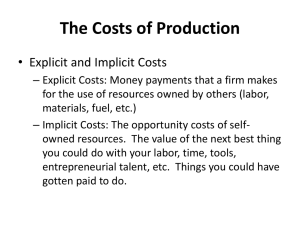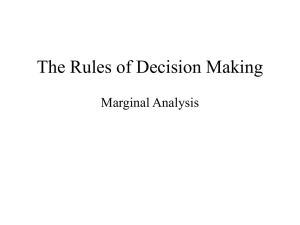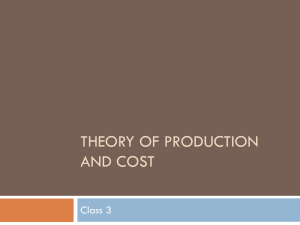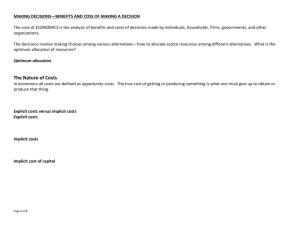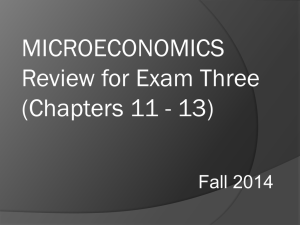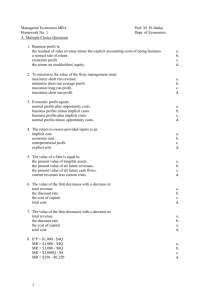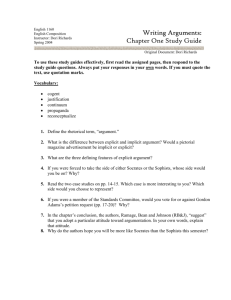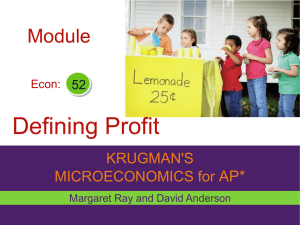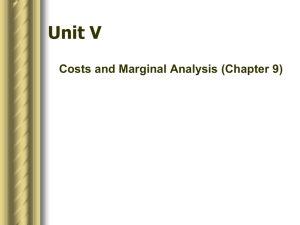College of Administrative Sciences Dr Mohammed El
advertisement
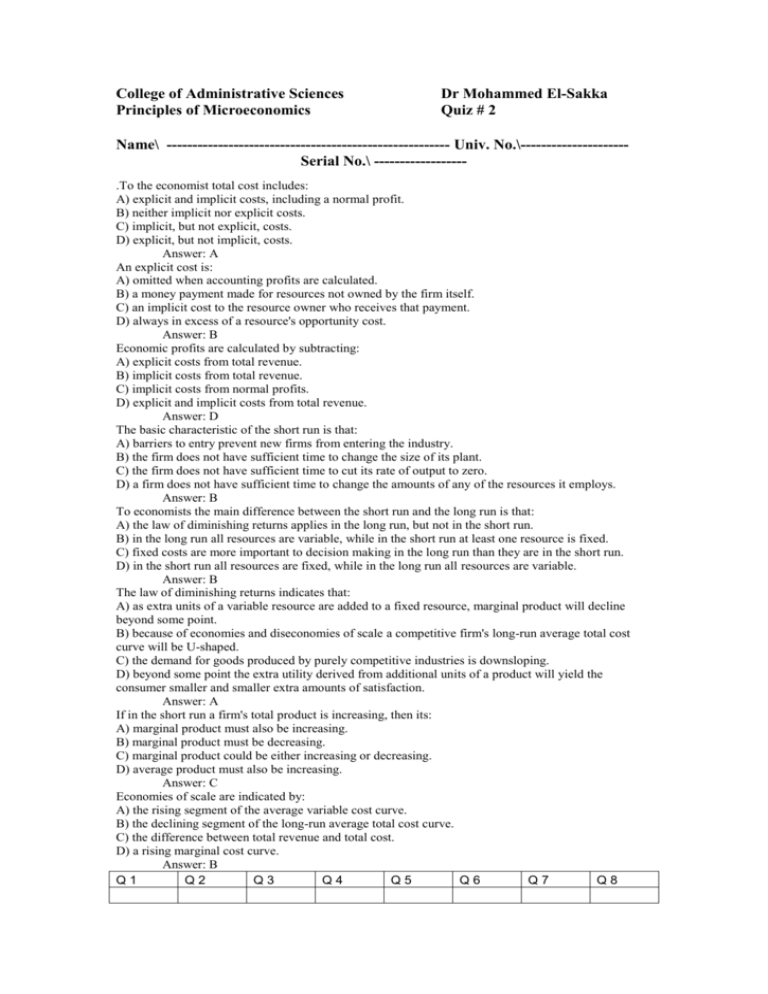
College of Administrative Sciences Principles of Microeconomics Dr Mohammed El-Sakka Quiz # 2 Name\ ------------------------------------------------------- Univ. No.\--------------------Serial No.\ -----------------.To the economist total cost includes: A) explicit and implicit costs, including a normal profit. B) neither implicit nor explicit costs. C) implicit, but not explicit, costs. D) explicit, but not implicit, costs. Answer: A An explicit cost is: A) omitted when accounting profits are calculated. B) a money payment made for resources not owned by the firm itself. C) an implicit cost to the resource owner who receives that payment. D) always in excess of a resource's opportunity cost. Answer: B Economic profits are calculated by subtracting: A) explicit costs from total revenue. B) implicit costs from total revenue. C) implicit costs from normal profits. D) explicit and implicit costs from total revenue. Answer: D The basic characteristic of the short run is that: A) barriers to entry prevent new firms from entering the industry. B) the firm does not have sufficient time to change the size of its plant. C) the firm does not have sufficient time to cut its rate of output to zero. D) a firm does not have sufficient time to change the amounts of any of the resources it employs. Answer: B To economists the main difference between the short run and the long run is that: A) the law of diminishing returns applies in the long run, but not in the short run. B) in the long run all resources are variable, while in the short run at least one resource is fixed. C) fixed costs are more important to decision making in the long run than they are in the short run. D) in the short run all resources are fixed, while in the long run all resources are variable. Answer: B The law of diminishing returns indicates that: A) as extra units of a variable resource are added to a fixed resource, marginal product will decline beyond some point. B) because of economies and diseconomies of scale a competitive firm's long-run average total cost curve will be U-shaped. C) the demand for goods produced by purely competitive industries is downsloping. D) beyond some point the extra utility derived from additional units of a product will yield the consumer smaller and smaller extra amounts of satisfaction. Answer: A If in the short run a firm's total product is increasing, then its: A) marginal product must also be increasing. B) marginal product must be decreasing. C) marginal product could be either increasing or decreasing. D) average product must also be increasing. Answer: C Economies of scale are indicated by: A) the rising segment of the average variable cost curve. B) the declining segment of the long-run average total cost curve. C) the difference between total revenue and total cost. D) a rising marginal cost curve. Answer: B Q1 Q2 Q3 Q4 Q5 Q6 Q7 Q8 Use this table to answer the following 3 questions Inputs of labor 0 1 2 3 4 5 6 7 Total product 0 8 18 25 30 33 34 32 Refer to the above data. When total product is increasing at an increasing rate, marginal product is: A) positive and increasing. B) positive and decreasing. C) constant. D) negative. Answer: A Refer to the above data. When total product is diminishing, marginal product is: A) positive and increasing. B) positive and decreasing. C) constant. D) negative. Answer: D Use this graph to answer the following 4 questions Refer to the above diagram. At output level Q total variable cost is: A) 0BEQ. B) BCDE. C) 0CDQ. D) 0AFQ. Answer: A Refer to the above diagram. At output level Q total fixed cost is: A) 0BEQ. B) BCDE. C) 0BEQ-0AFQ. D) 0CDQ. Answer: B Refer to the above diagram. At output level Q total cost is: A) 0BEQ. B) BCDE. C) 0BEQ plus BCDE. D) 0AFQ plus BCDE. Answer: C Refer to the above diagram. At output level Q average fixed cost: A) is equal to EF. B) is equal to QE. C) is measured by both QF and ED. D) cannot be determined from the information given. Answer: C Q1 Q2 Q3 Q4 Q5 Q6 Q7
